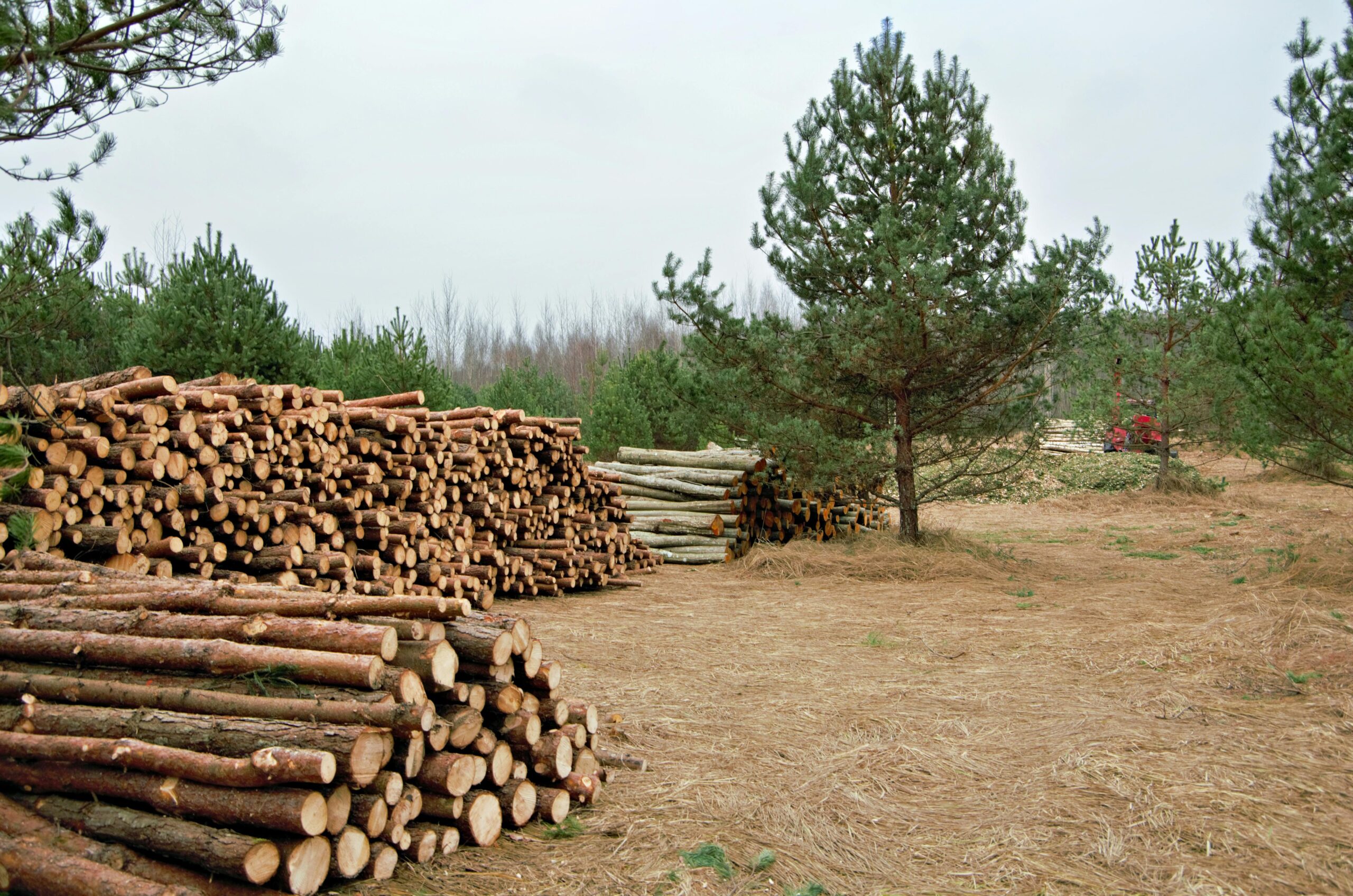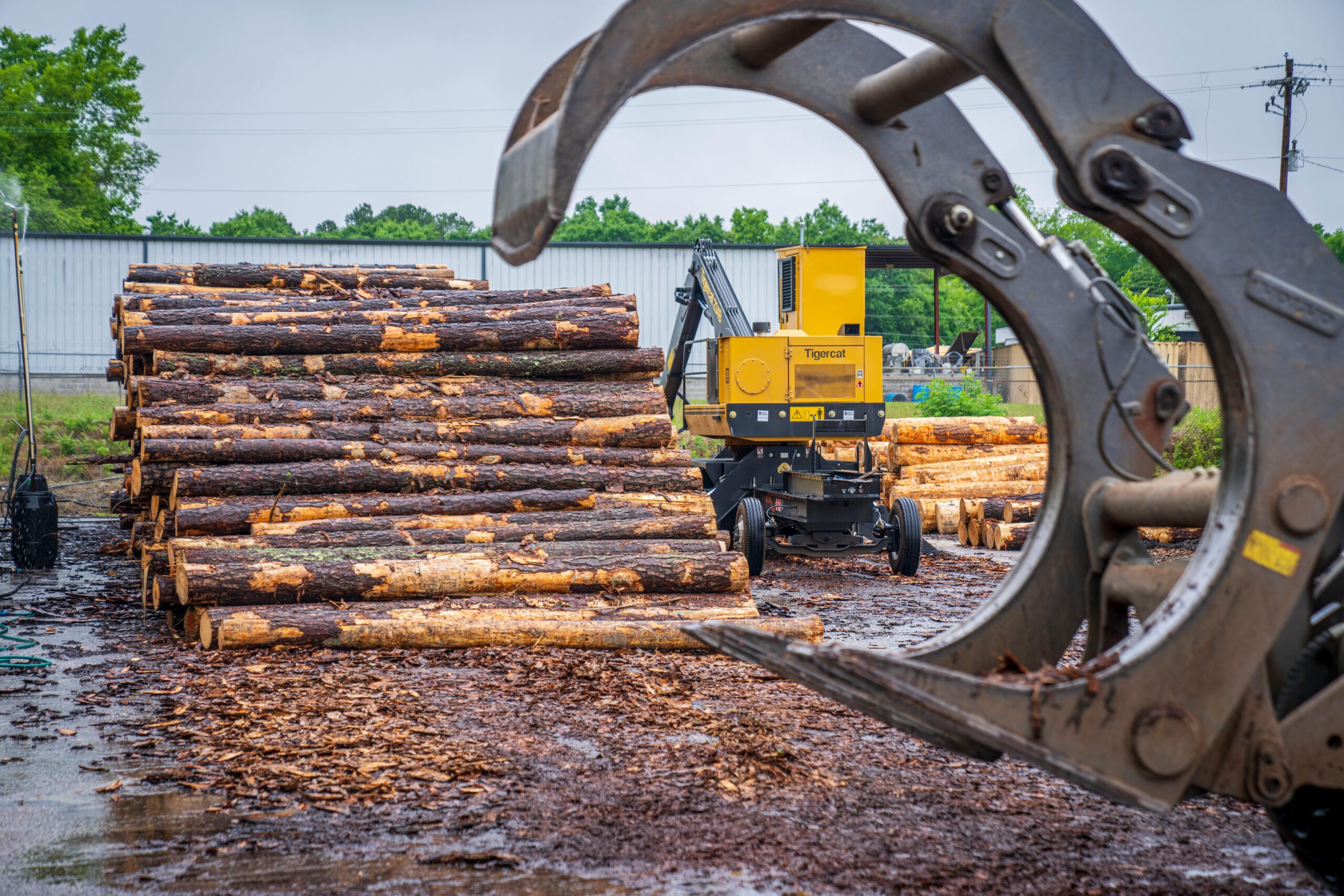The EU Deforestation Regulation (EUDR) is a major legislative step toward sustainable trade and environmental responsibility. It was introduced to address the growing concern over deforestation driven by the EU’s consumption of certain commodities. This regulation directly affects businesses involved in importing or exporting key agricultural and forestry products within the EU market.
For professionals working in supply chains, compliance, procurement, or sustainability, understanding the EUDR is essential. The regulation sets strict criteria that companies must meet to access the European market, emphasizing traceability, due diligence, and accountability across the value chain. It also reflects a broader EU strategy for combating climate change, preserving biodiversity, and promoting ethical trade practices.

Why the EUDR Was Introduced
The EUDR introduces a new legal framework aimed at reducing the EU’s impact on global deforestation. To understand how it works, we begin with a look at its definition and primary legal intent.
Core Legal Requirements
EUDR stands for the European Union Deforestation Regulation. It was adopted as Regulation (EU) 2023/1115 in June 2023. The regulation prohibits the placing, making available, or exporting of certain commodities and products unless they are proven to be:
- Deforestation-free (produced on land not subject to deforestation after 31 December 2020).
- Produced in compliance with relevant laws in the country of origin.
- Covered by a due diligence statement confirming low or no risk of deforestation.
The overarching goal is to reduce the EU’s contribution to global deforestation and forest degradation while promoting more sustainable consumption.
What the Regulation Requires
The EUDR emerged as part of the European Union’s broader environmental agenda, which includes major frameworks like the European Green Deal and the Fit for 55 package. These initiatives aim to make the EU climate-neutral by 2050 and reduce greenhouse gas emissions by 55% by 2030 compared to 1990 levels. Addressing global deforestation is a vital part of achieving these goals, as forest loss is a major driver of carbon emissions and biodiversity decline.
Beyond climate change, the regulation is a response to increasing international concern over the destruction of natural ecosystems and the rights of Indigenous Peoples. Forests are not only carbon sinks but also home to an estimated 80% of the world’s terrestrial species and provide livelihoods for more than a billion people. Unregulated demand for commodities like soy, palm oil, and cattle has contributed to deforestation hotspots, especially in tropical regions.
The EUDR acknowledges that legality alone is insufficient. Many deforestation activities are technically legal in the country of origin but still harmful. The regulation thus introduces new environmental and ethical standards that go beyond national law. It represents a shift toward a responsibility-based trade model, where importers and exporters must consider the environmental and human rights impacts of their supply chains.
What Does EUDR Cover?
The EUDR applies to a specific set of commodities and actors across the supply chain. Understanding the scope of this coverage is critical for assessing compliance obligations.
Products and Commodities Affected
The regulation applies to seven high-risk commodities and many derived products. These include:
- Cattle: Includes live cattle, meat, offal, leather, and hides.
- Cocoa: Beans, paste, butter, powder, and chocolate.
- Coffee: Green and roasted beans, husks, and extracts.
- Palm oil: Crude, refined, and derivatives.
- Soy: Beans, flour, oil, and meal.
- Wood: Logs, lumber, wood products, paper, and pulp.
- Rubber: Natural rubber and a range of manufactured rubber goods.
In addition, the EUDR applies to any products that contain, have been fed with, or were made using these commodities. Examples include furniture, chocolate, leather goods, and printed books.
Operators and Traders in Scope
The EUDR distinguishes between two categories:
- Operators: Businesses that place relevant products on the EU market or export them.
- Traders: Any other entities in the supply chain that make products available but do not directly import or export.
Both groups have specific responsibilities, though operators bear the main burden of compliance.
Key Requirements Under EUDR
To comply with the EUDR, companies must meet several core requirements, including comprehensive due diligence, full traceability, and formal reporting.
Due Diligence Obligation
Before placing products on the market, companies must conduct a full due diligence process. This involves:
- Collecting detailed information about the product’s origin, supply chain, and compliance.
- Assessing the risk of deforestation or illegality.
- Taking mitigation measures where necessary to eliminate or reduce risk.
Failure to carry out due diligence effectively results in non-compliance, even if the product itself is legal or deforestation-free.
Geolocation and Traceability
One of the most critical elements of EUDR compliance is traceability. Companies must provide geolocation coordinates for the land where the commodities were produced. This allows authorities to verify that no deforestation occurred after 31 December 2020.
Traceability must be accurate to the level of a single plot of land and supported by credible evidence. Without this, a product cannot be legally placed on or exported from the EU market.
Reporting to the EU Information System
To streamline enforcement and ensure transparency, all due diligence statements must be submitted through the centralized EU Information System. This digital platform, currently under development by the European Commission, will serve as a repository of compliance data for all operators and traders covered by the EUDR.
Each due diligence statement must be submitted before placing a product on the market or exporting it. The statement must include:
- Product identification and volume.
- Country of production.
- Geolocation coordinates of all relevant plots.
- Risk assessment results.
- Measures taken to mitigate risks.
- A declaration of compliance signed by the operator.
National authorities across EU member states will access this platform to monitor compliance, flag anomalies, and prioritize inspections. The system is also expected to be interoperable with customs and trade databases, allowing automated risk-based screening of imports. Over time, it may integrate with satellite monitoring and third-party verification systems, increasing efficiency and reducing manual checks.
Operators must retain submitted statements and supporting documents for at least five years. Annual reviews and updates are required if supply chains change or new information becomes available.
Timeline for Implementation
The EUDR was formally adopted in June 2023 and will be applied in phases to give businesses time to adapt to its new obligations. This phased implementation means that different types of companies will face deadlines depending on their size:
- Large companies must comply with the regulation by 30 December 2025.
- Small and micro-enterprises have an additional six months, with a deadline of 30 June 2026.
These deadlines apply to both placing products on the EU market and exporting them from the EU. However, the “phased application” is not only about dates – it also implies that businesses should use the interim period to build readiness, including:
- Mapping their supply chains and identifying where EUDR-regulated commodities are sourced.
- Collecting geolocation data for every production plot involved.
- Engaging with suppliers to ensure traceability and legal compliance.
- Implementing internal due diligence systems and staff training.
- Preparing to upload due diligence statements to the EU Information System.
Additionally, timber and timber products harvested before 29 June 2023 are exempt from some requirements until 31 December 2027, allowing companies with long production cycles to adjust without being penalized retroactively.
Delaying preparation carries real risks: companies that are not ready by the deadline may face market access restrictions, product seizures, or regulatory fines of up to 4% of EU turnover. Since compliance depends on complex, cross-border collaboration and accurate data collection, last-minute readiness is not a viable option.
Starting preparations well in advance is critical for companies aiming to maintain EU market access and avoid legal or financial consequences.

Enforcement and Penalties
The enforcement of the EUDR is delegated to the competent authorities in each EU member state. These bodies will apply a risk-based approach when deciding which operators or traders to inspect. Risk profiling will consider:
- The country of origin’s classification (high, standard, or low risk).
- The complexity of the supply chain.
- History of previous violations or non-compliance.
- The type of product and its deforestation risk.
- Information provided in the due diligence statement.
- External alerts, such as NGO reports or satellite data.
Inspections may involve document audits, supply chain analysis, and physical product sampling. Authorities may also use advanced tools, including DNA testing, satellite imagery, and forensic techniques to verify product origin and species.
If a company is found non-compliant, corrective actions may be ordered immediately. These can include product withdrawal, market bans, or supply chain remediation. In addition to administrative measures, penalties may involve:
- Fines up to 4% of the company’s EU turnover.
- Seizure or destruction of goods.
- Exclusion from public procurement or EU funding for up to 12 months.
- Temporary suspension from simplified procedures.
Penalties must be “effective, proportionate, and dissuasive,” encouraging proactive compliance and discouraging risk-taking behavior.
Implications for Businesses
The EUDR has far-reaching implications for companies operating in international supply chains. These effects range from procurement strategies to technology adoption.
Impact on Supply Chains
The EUDR significantly affects how companies manage their supply chains. To remain compliant, businesses must ensure:
- Full transparency from source to shelf.
- Cooperation with upstream suppliers, including smallholder farmers.
- Elimination of deforestation-linked sourcing, regardless of legality.
This places pressure on companies sourcing from regions such as Southeast Asia, Latin America, and sub-Saharan Africa, where deforestation risks are high and data availability is limited.
Some companies may need to switch suppliers, renegotiate contracts, or restructure sourcing strategies altogether. While challenging, these efforts can also lead to more resilient, sustainable supply chains.
Need for New Tools and Systems
To meet the technical and legal demands of the EUDR, companies are turning to advanced digital solutions that enhance supply chain visibility, traceability, and reporting capabilities. These tools support businesses in collecting, verifying, and managing data according to the regulation’s strict requirements.
Key categories of tools and their functions include:
Supply chain mapping platforms.
These systems allow businesses to trace products back to the source, including indirect suppliers, and visualize risk areas based on geolocation data. They support audit trails and can be integrated with internal compliance workflows.
Forest monitoring and satellite alert services.
Real-time satellite-based platforms detect changes in forest cover, such as deforestation or degradation. They help assess risk in specific regions and validate that production plots remain deforestation-free after 31 December 2020.
Geospatial analytics and risk assessment tools.
These provide customized alerts, land-use classification, and predictive insights for identifying and managing risks in high-risk supply chains.
Enterprise systems with integrated compliance features.
Many companies embed geospatial tracking and due diligence reporting into their enterprise resource planning (ERP) systems. This enables automated checks, version control, secure documentation, and readiness for inspections or audits.
By investing in such digital infrastructure, businesses not only ensure regulatory compliance but also gain better control over their operations. These technologies reduce manual work, enhance transparency, and build trust with regulators, customers, and stakeholders.
Criticism and Challenges
Despite its strong environmental intent, the EUDR has drawn criticism from multiple stakeholders. One major concern is data availability. In many regions, especially in developing countries, geolocation data is unreliable, outdated, or simply not collected. This makes it difficult for businesses to fulfill traceability obligations, particularly when sourcing from smallholder farms.
Another issue is the economic impact on producing countries. Exporters in Latin America, Southeast Asia, and Africa argue that the regulation imposes additional costs and complexity, potentially harming trade relations and reducing market access for local producers. Countries like Brazil and Indonesia have called the regulation unilateral and protectionist, raising tensions in international negotiations.
A particularly sensitive topic is the risk of excluding smallholders. These producers often lack the resources, digital tools, or documentation to prove compliance. Without targeted support, they may be pushed out of EU supply chains, exacerbating poverty and inequality in vulnerable regions. Critics argue that the EUDR, while well-intentioned, could inadvertently reinforce existing power imbalances in global trade.
The European Commission acknowledges these concerns and has committed to offering technical assistance, developing partnerships with producer countries, and promoting inclusive implementation strategies. However, bridging the gap between regulatory ambition and practical realities remains one of the biggest challenges ahead.

EUDR.co: A Practical Tool for Streamlining EUDR Compliance
As the EUDR enforcement deadline approaches, compliance has become a complex and urgent priority for businesses across affected sectors. That’s where EUDR.co comes in – a dedicated resource built to guide companies through every stage of the regulation. The platform provides practical tools and up-to-date insights to help businesses collect required data, assess deforestation risks, and meet due diligence obligations with confidence.
EUDR.co simplifies traceability, clarifies legal requirements, and reduces the compliance burden through structured checklists, expert guidance, and strategic planning templates. Whether the task is mapping supply chains, gathering geolocation data, or preparing for audits, EUDR.co transforms regulatory pressure into a clear roadmap for responsible sourcing and long-term operational resilience.
Conclusion
The EUDR marks a significant evolution in the EU’s approach to sustainability, trade, and environmental protection. By requiring products to be deforestation-free and fully traceable, it challenges companies to take greater responsibility for their global impact. While the road to compliance may be complex, especially for companies operating in high-risk regions, the regulation also offers a clear opportunity to lead in ethical, sustainable sourcing.
For professionals involved in supply chain management, procurement, or corporate sustainability, the EUDR is not just a legal obligation – it’s a strategic imperative. Those who adapt early and invest in transparency will be better positioned to access the EU market, build stakeholder trust, and future-proof their operations in a rapidly changing regulatory landscape.
FAQ
1. What is the EUDR?
The EUDR, or European Union Deforestation Regulation, is a legal framework adopted by the EU in June 2023 as Regulation (EU) 2023/1115. Its purpose is to ensure that certain high-risk commodities and products placed on or exported from the EU market are not linked to deforestation or forest degradation. To comply, products must be proven to be deforestation-free (i.e., produced on land that was not subject to deforestation after 31 December 2020) and in accordance with the laws of the producing country. This regulation is part of the EU’s broader effort to combat climate change, protect biodiversity, and promote ethical and sustainable trade practices.
2. When does the EUDR take effect?
The EUDR enters into application on a phased basis. Large companies must comply by 30 December 2025, while small and micro-enterprises have until 30 June 2026. These deadlines apply to both placing products on the EU market and exporting them from the EU. However, the preparatory period before these dates is crucial, as businesses are expected to build internal systems, engage suppliers, and collect required data well in advance. Failing to be fully compliant by the deadline may lead to legal penalties, disrupted trade, or loss of market access.
3. What products are affected by the EUDR?
The regulation covers seven high-risk commodities known to drive deforestation: cattle, cocoa, coffee, palm oil, soy, wood, and rubber. It also includes many products derived from these commodities, such as leather, chocolate, furniture, paper, books, and certain rubber goods. Additionally, any product that contains, was fed with, or was manufactured using these commodities falls under the scope of the EUDR. This broad scope means that a wide range of sectors – from food to fashion to furniture – must ensure full compliance throughout their supply chains.
4. What must businesses do to comply?
Businesses must implement a robust due diligence system before placing relevant products on the EU market. This includes gathering comprehensive information on product origin, mapping supply chains, collecting geolocation coordinates for production plots, and verifying compliance with both local laws and the EU’s deforestation cut-off date. They must assess deforestation and legal risks, take mitigation actions if necessary, and submit a formal due diligence statement to the EU Information System. Even if a product is technically legal or certified, lack of due diligence constitutes non-compliance under the regulation.
5. What are the penalties for non-compliance?
Failure to comply with the EUDR can result in a range of penalties, depending on the severity of the violation. Sanctions may include fines of up to 4% of the company’s EU turnover, confiscation or destruction of goods, temporary bans on access to the EU market, exclusion from public procurement or EU funding, and even suspension from simplified import procedures. National authorities are responsible for enforcement and will apply a risk-based inspection approach, including both document checks and physical investigations. Penalties are designed to be effective, proportionate, and dissuasive.
6. How can companies trace product origins?
To trace product origins, companies must collect precise geolocation data for the land where commodities were produced – down to the individual plot level. This allows regulators to verify that no deforestation took place after the 2020 cut-off date. Businesses typically use a combination of internal documentation, supply chain declarations, satellite imagery, and digital traceability tools to track and validate origin data. Accuracy, transparency, and verifiability are key: without reliable tracing, companies cannot legally sell or export covered products under EUDR.
7. What challenges do businesses face?
Among the main challenges are data availability and quality, especially when sourcing from smallholders or remote areas where digital records and geolocation infrastructure may be lacking. Many companies must engage deeply with upstream suppliers to obtain necessary documentation and proof of compliance. There’s also the cost and complexity of building due diligence systems, conducting risk assessments, and training staff. In addition, there’s a risk of excluding small-scale producers who cannot meet technical requirements, raising concerns about fairness and access to EU markets – especially for suppliers in the Global South.
